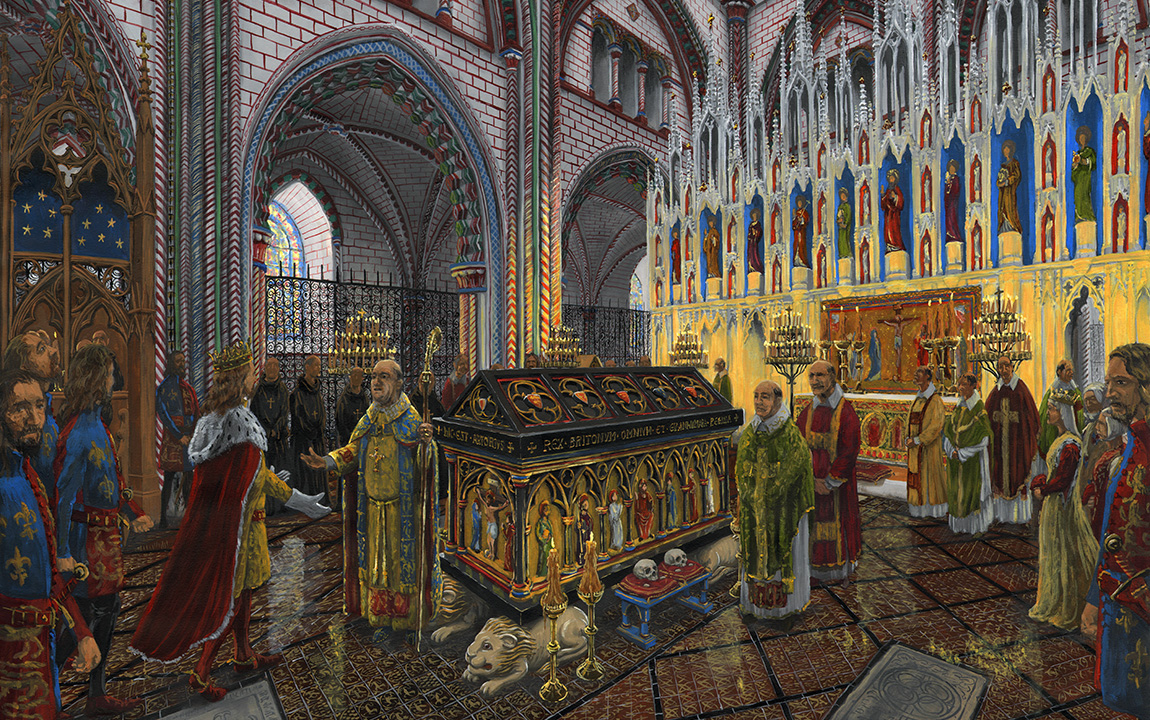The Independent has an article about a class of graves from the post Roman period which it is argued are Christian from their location in western Britain and Ireland and the absence of grave goods. They are also, on the basis of their being clearly marked out and distinct from other burials by having being enclosed by individual fencing, of high status individuals. The inference is that these were the graves of local post-Roman kings or sub-kings.
The article can be read at Resting place of Celtic kings revealed as discovery sheds light on King Arthur era
On a related topic I came across a MailOnline article from 2016 which may well just reflect one man’s theory by locating the burial place of King Arthur in Shropshire. I have not heard anything else about this theory, and that may be all it is, but it is quite intriguing. The article can be read at Is King Arthur buried in a field in Shropshire?
Glastonbury is, of course, the traditional burial place of King Arthur. This tradition appeared to be dramatically confirmed when the monks excavated in the graveyard south of the Lsdy Chapel - the “Old Church of Glastonbury” - in 1191 and came upon the remains of a warrior and his presumed wife, beneath the famous lead cross - now lost - which identified that these were indeed the remains of King Arthur and Queen Guinevere. Research in recent years has suggested that the cross is similar in style to similar pieces of 10th century date from Wells Cathedral. This would suggest it dated from the raising of the level of the graveyard in the time of St Dunstan.
I came upon an article on the Academia website which accepts the description of the bones as recorded by the chronicler and suggests that whilst they might not be those of the historical King Arthur the bones were indeed ancient and that the chronicle account should be accepted as s faithful account. The first English archaeological report perhaps. An early fifteenth century letter from the Abnot of Glastonbury to King Henry V about another excavation of bones at Glastonbury continues that early archaeological tradition at the abbey.
The article can be read at King Arthur's tomb in Glastonbury as an ancient Sarmatic Burial?
Another article I came upon ends with the intriguing notion that at his death King Arthur was changed into a raven, which is seen as a royal bird. This article can be read at King Arthur, his death, his burial
It made me wonder if this is not the origin of the ravens at the Tower of London and their presence seen as a guarantee of the survival of the Crown and the safety of the realm. This tradition was clearly there by the time of King Charles II.
Now as we all know the site of the Tower is the burial place of the head of Bran the Blessed, which also serves to defend the country, and I see that the Wikipedia account of his life and legend does reference discussion of this possible link with the ravens. The article can be read at Brân the Blessed
I also wondered if the legend’s claim that Branmhad his base at Harlech was a factor in KingnEfward I’s decision to build his great castle there in the 1280s.
Whatever one makes of all this legendary history and whichever version one follows they do disclose a rich vein of myth and mystery that weave a wonderful web that draws together a fascinating series of stories and images. A reminder of the multi-faceted medieval imagination.

A reconstruction of the tomb of King Arthur and Queen Guinevere in the choir of Glastonbury Abbey as they might have appeared at the time of the visit of King Edward III and Queen Philippa in December 1331.
Image: University of Reading
There is more about the reconstruction at Reconstructing King Arthur’s tomb: the stuff of legends - Glastonbury Abbey Archaeology
Don’t ask me why the vested monks are wearing such a varied range of liturgical colours - it’s the sort of avoidable mistake that is made all too often ….


No comments:
Post a Comment